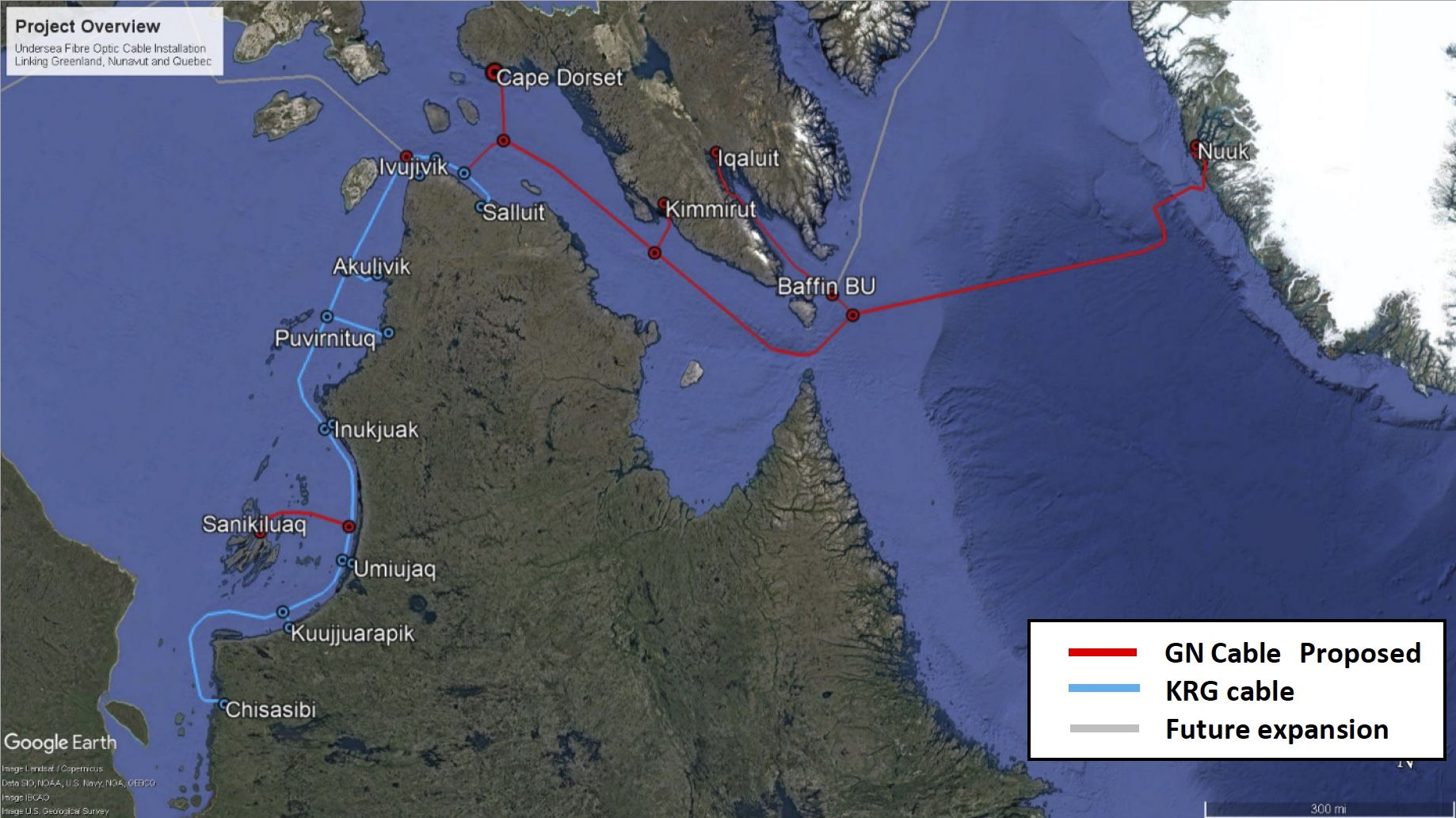Nunavut government backs away from Iqaluit-Nuuk fiber-optic cable
Instead the territorial government will now focus on a marine cable that will run past Nunavik to Chisasibi.

The Government of Nunavut’s $209 million plan for plugging the territory into an ultra-fast fiber-optic cable will likely take a big detour this year, a government spokesperson told Nunatsiaq News earlier this week in an email.
“There has been significant work on this project over the past year as the GN had an opportunity to examine a new and emerging alternate route,” stated Angela Petru, the territorial government’s director of communications.
That new route would eliminate the original plan: a subsea cable connection between Iqaluit and Nuuk.
Instead, the cable would start off in Iqaluit, take a big right turn at the mouth of Frobisher Bay, then curl into Hudson Strait toward Hudson Bay.
There, it would connect with another cable that the Kativik Regional Government will start installing this year between Puvirnituq and Chisasibi.
At Chisasibi, the Kativik cable links up with a land-based line that runs to Montreal, where it will hook up with the North American backbone.
“This will create a higher value option for the GN to connect into the existing North America fibre system,” Petru said.
“[It will also] allow the GN to have a fibre backbone in the south Baffin region and moving west towards the Kivalliq for a potential future connection of that region into existing fibre in Churchill, Man.”
The Nunavut government is now working with the Kativik Regional Government and hopes to have a final route design done by this summer or fall. The territorial government hopes to be ready put out a public procurement seeking a firm to design and build the system in late 2021.
In its 2018 project description, the territorial government said a link to the Kativik cable would be added during a later phase, to provide a backup for the Nuuk connection.
Last May, the Kativik government signed a contract with Alcatel Submarine Networks to lay a fiber-optic cable between Chisasibi and Puvirnituq, with branches leading to Kuujjuaraapik, Umiujaq and Inukjuak.
Salluit connection possible
The Kativik line could go further. The Nunavik organization has applied to the CRTC for funding that would extend its cable as far as the village of Salluit, which sits on Hudson Strait across from Kinngait.
Petru said if the Kativik Regional Government does get that additional funding, then the Nunavut government would plan for a connection to Salluit — which is much closer to Iqaluit and Kimmirut.
Another branch line would likely connect to Sanikiluaq.
In the future, the Nunavut cable could move west to the Kivalliq region, where it could hook up with a land-based fiber and hydroelectric line that the Kivalliq Inuit Association and a private firm called Anbaric Development Partners are now planning for.
The territorial government also expects it can afford to pay for the Kativik route out of the $209.5 million they’ve already budgeted for the line, Petru said.
According to its 2021-22 capital budget, the Nunavut government has already spent $4 million on the fiber-optic project. Between 2023 and 2026, it plans to kick in another $54.5 million, while the federal government will contribute $151 million.
KRG route avoids Huawei connection
The Nuuk-Iqaluit route required use of telecom hardware made by Huawei, which TELE Greenland installed in 2017. Petru said that won’t be the case with the Nunavik route.
Even if the Nuuk route were to go ahead, Petru said the territorial government could install its own hardware, allowing it to “pursue an alternate vendor to Huawei if we choose,” Petru said.
“The GN is carefully examining the national and international storyline relative to Huawei and relative security threats,” she said.
At the same time, she said the territorial government is working alongside the federal government in developing an official procurement policy related to Huawei.
Meanwhile, a new company called CanArctic Inuit Networks is a pitching a fibre-optic cable proposal of its own: a line running from Iqaluit to Clarenville, Newfoundland.
CanArctic has previously said it has reached out to the federal government to cover 75 per cent of the estimated $107-million cost of that cable, and hopes private financing will take care of the rest.